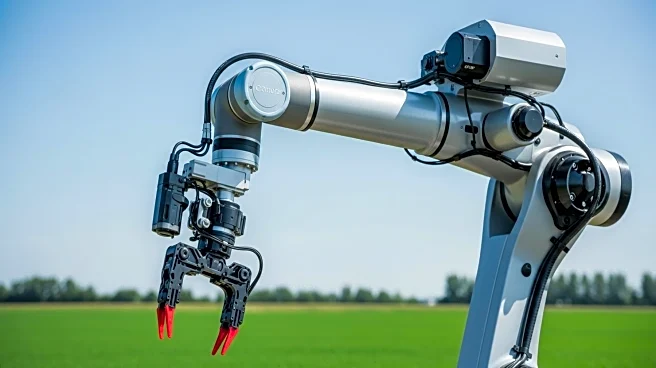What's Happening?
India is emerging as a significant market for robotics and automation, driven by its large population and growing manufacturing sector. The country aims to increase the manufacturing sector's contribution to GDP from 12% to over 20% in the coming decades. Initiatives like 'Make in India' and investments from global companies, such as Apple's decision to manufacture iPhones in India, indicate a shift towards automation. Despite this, Indian manufacturers have traditionally relied on manual labor due to cost considerations. However, the decreasing cost and increased ease of use of robots, coupled with rising wages, are changing this dynamic. India installed 8,510 new industrial robots in 2023, marking a 59% increase from the previous year, yet it still lags behind countries like China in robot density.
Why It's Important?
The growth of robotics and automation in India is crucial for the country's competitiveness in global manufacturing. As wages rise and the demand for precision and productivity increases, automation becomes economically viable. This shift could enhance India's manufacturing capabilities, particularly in sectors like automotive and electronics, where precision and standardization are critical for international competitiveness. The adoption of robotics could help Indian manufacturers meet global standards, potentially boosting exports and economic growth. However, the transition requires significant investment in infrastructure, training, and cultural shifts towards embracing industrial precision.
What's Next?
India's path forward involves overcoming its reliance on cheap labor and investing in the necessary infrastructure and training to support automation. Centers like Omron's Automation Center in Bengaluru are pivotal in providing training and collaborative spaces for manufacturers. The country needs to foster a cultural shift towards precision and repeatability in manufacturing to fully leverage the benefits of robotics. If successful, India could position itself as a major player in global manufacturing, competing with countries like China and South Korea.
Beyond the Headlines
The integration of robotics in India’s manufacturing sector could lead to a dual-track approach, where traditional industries maintain their handcrafted identity while high-growth sectors embrace automation. This balance could preserve cultural uniqueness while meeting international demand for standardized products. The economic argument for automation strengthens as robots become cheaper and wages rise, potentially transforming India's manufacturing landscape.











